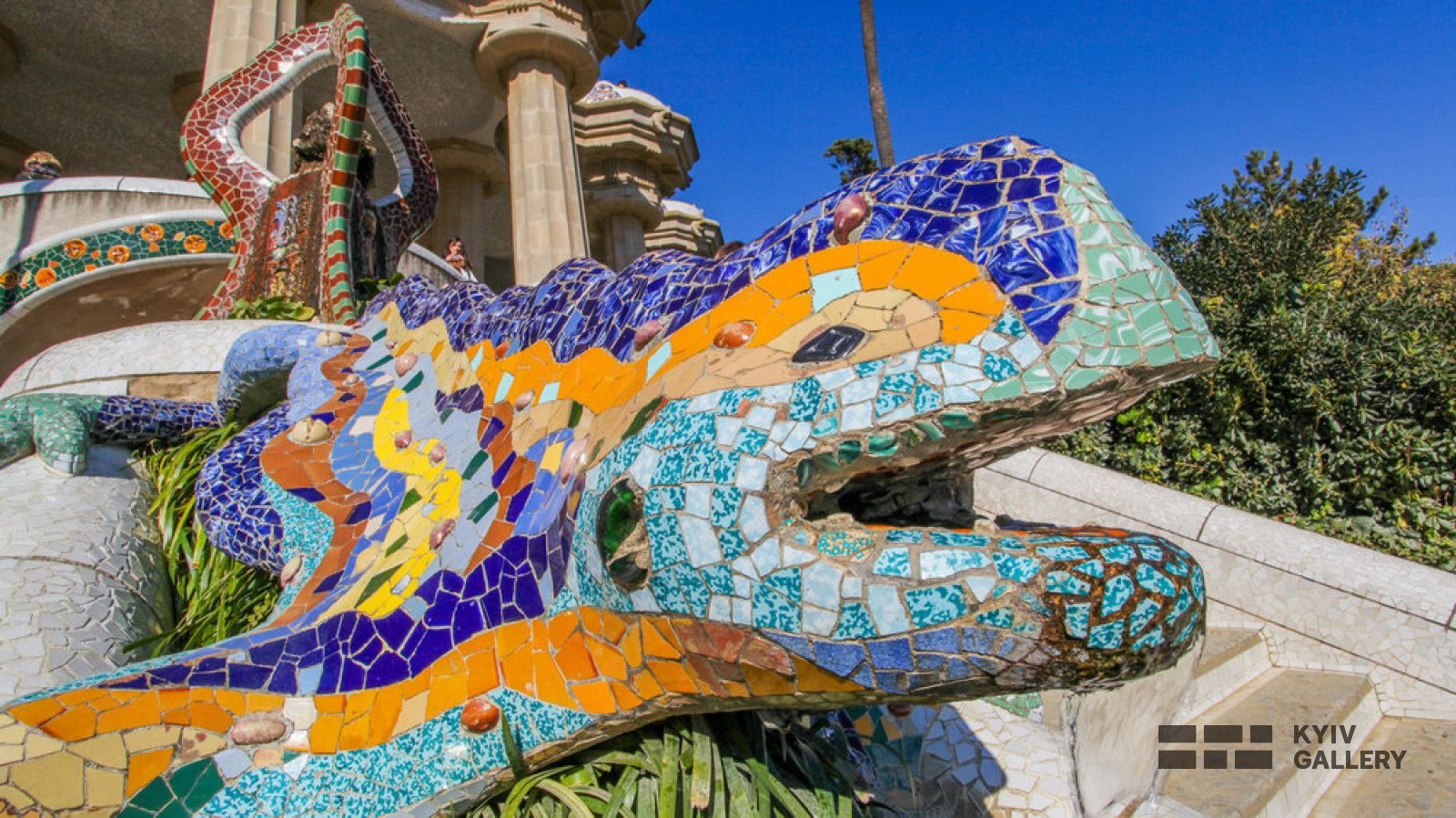

Mosaic is a technique of creating images on a solid surface using colored fragments. It has been used for several millennia by masters from around the world. Due to its versatility, mosaics managed to become an international art form and a kind of bridge for the dialogue of different cultures. It decorated the aristocrats' houses, filled the temples' interiors with sacred meaning, and gave the architectural landscape an unforgettable flavor. Despite its venerable age, the technique continues to open new horizons of development in our era.
Mosaic in the era of Antiquity and the Middle Ages
Art historians are lost in guesses about when precisely the technique was invented. The age of some works made with its help is more than 5 thousand years. Presumably, the first works appeared in the cradle of our civilization, Mesopotamia. In those days, it was used mainly for decorative purposes: fragments of clay walls decorated with patterns of fired clay pieces have survived to this day. Thanks to the glazing technology and the processing of metal oxides, the masters achieved maximum color saturation of the front side of the fragments. Images composed of such elements (pin mosaics) also decorated monumental buildings, such as the palace in the ancient city of Ur.
From Mesopotamia through Phoenicia, the mosaic was brought to Ancient Greece. In the III century BC, it was finally formed as a form of decorative and applied art and received its current name (derived from the word of the ancient Greek divine patrons of art Muses). In those days, the masters paid maximum attention to the realism and picturesqueness of the works. In the Roman Empire, mosaics filled the entire urban space. It could be seen on the walls of houses, on road surfaces, in pools, fountains, and religious buildings. Today you can admire almost new black and white compositions at the excavation site of the ancient city of Pompeii.
After the death of the Roman Empire, Byzantium took over the baton. According to art historians, the technique reached new heights here. One of the reasons for this was the particular geographical position of Byzantium between the West and the East. The famous Byzantine mosaics decorated the domes and vaults of temples, walls of monumental buildings, and houses of aristocrats. The demand for religious subjects required the masters to use special techniques that could enhance the acuteness of the viewer's spiritual experience. Smalt (translucent glass with metal oxides) and gold foil substrate were actively used as materials. The Byzantine mosaic is dominated by blue, green, red, and white colors.
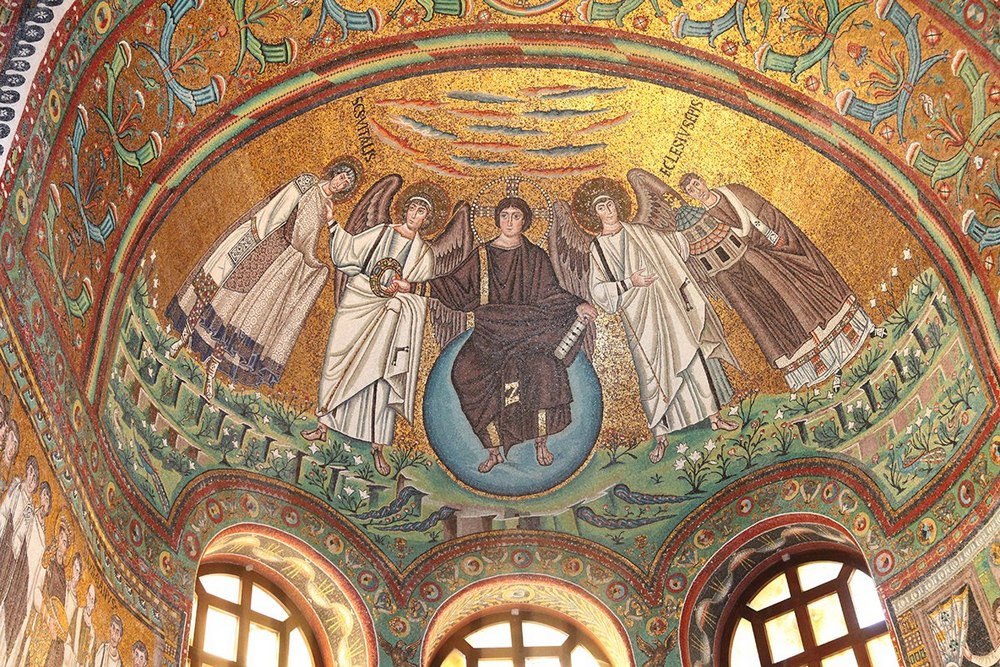
"Mosaics in the Basilica of San Vitale". Photos © tsargrad.biz
Being under the strong political and cultural influence of Byzantium, Kyivan Rus inherited the traditions of Greek art with great enthusiasm. In the IX-X centuries, the fashion for mosaic spread to the Slavic states. To this day, one of the most prominent ensembles of frescoes and mosaics is preserved in St. Sophia Cathedral in Kyiv. Here you can see the colorful outline of figures and golden background, characteristic of the Byzantine tradition.
In Muslim countries, masters were forced to adhere to religious prohibitions on depicting human faces. This ban had such a substantial impact on the culture of Muslim countries that even after the partial weakening of the influence of religion on society, traditions remain strong. Because of this, ornament (flowers, geometric shapes) is the most popular subject. Mosaics were used to decorate private houses, palaces, and mosques. Today you can see the works of the early period of Islam on the ruins of the Hisham's Palace, also known as Khirbat al-Mafjar, near Jericho and the Great Mosque of Cordoba in Andalusia.
Mosaic in the era of Modernity and Art Nouveau
The achievements of Byzantine masters had a significant impact on Italian art. By the middle of the XVI century, the tradition of the Florentine school was finally formed. Its representatives used precious and semi-precious stones as materials. Around this time, mosaic became an independent refined art technique. With its help, masters create stunning panels for interior decoration.
After the XVI century, mosaics gave way to frescoes and paintings for several centuries. But in the XIX century, European masters revived the forgotten technique. The plant "Emaux de Briare" began producing mosaic elements in France. Later they were used in his work by the representative of the Art Nouveau movement Eugene Grasse and other French masters. In Italy, the forgotten technique was revived by Antonio Salviati. He used Venetian glass as a material for his works. The image on the tympanum of the southern facade of the Prince Albert Memorial in South Kensington, London, gives an idea of Salviati's technique.
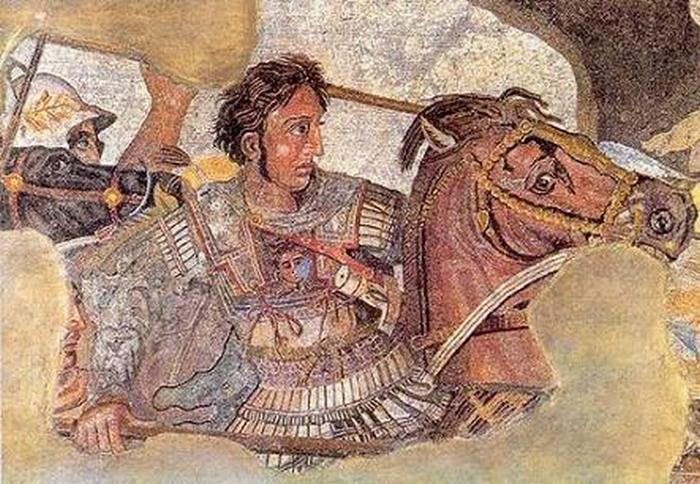
"Mosaics, House of the Faun - Battle of Issus". Photos © ermakvagus.com
But the genuinely outstanding success was achieved by the Spanish architect Antoni Gaudi. Considering decorativeness to be the beginning of architecture, the master actively used mosaics to decorate the interiors and facades of Art Nouveau buildings. According to Gaudi, the composition's colors should be logical, rich, and bright. Guided by this principle, the architect decorated his projects with a stunning colorful mosaic. As a material, the master used fragments of broken ceramic products. Today you can admire the master's creations in the Park Guell in Barcelona, where almost the entire heritage of Gaudi is located.
Types of mosaics
There are several classifications of mosaics depending on the method of laying and type of materials. According to the practice of laying, the following types are distinguished:
1. Parquetry. Elements have the form of geometric shapes. Such works have a simple composition, which is in demand when creating floor patterns and wall panels.
2. Intarsia. A kind of figured mosaic is performed by precisely fitting mosaic tiles to each other with subsequent gluing. After that, the surface is polished to smooth out irregularities at the joints.
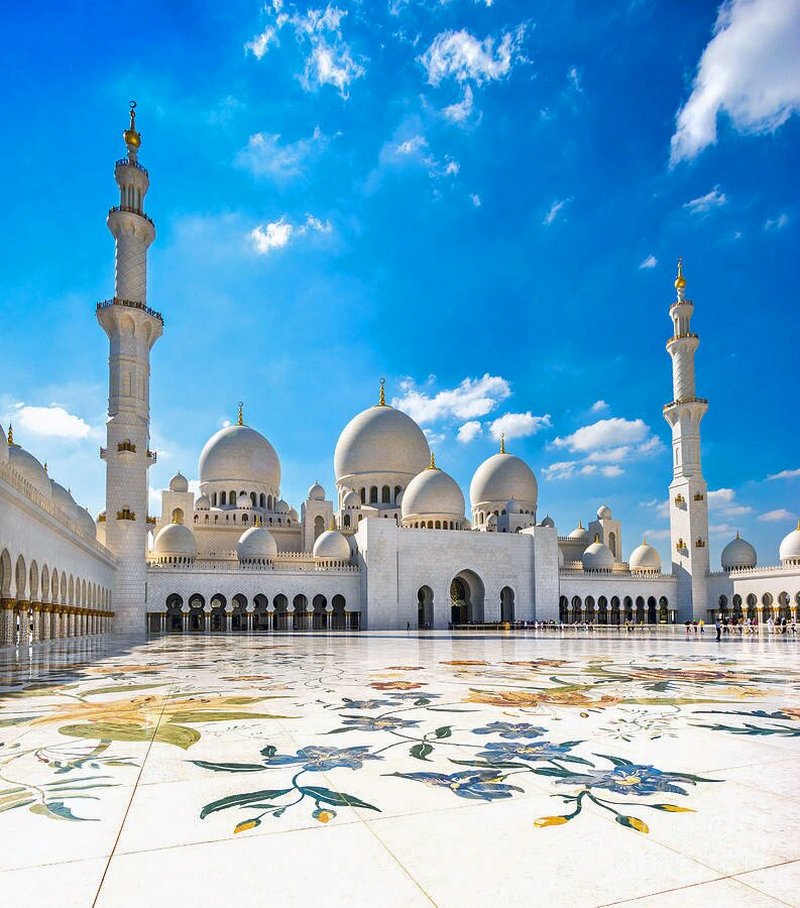
"Floor mosaics, The Great Mosque of Sheikh Zayd". Photos © fishki.net
3. Inlay. This laying technique involves embedding some elements into others—one of the most technically tricky ways of laying.
4. Block mosaic. In this type of laying, blocks are grouped by colors and tones, achieving a stunning visual effect due to color solutions, not the shape of the elements.
Depending on the materials used, mosaics can be glass, stone (pebble, marble, precious stones), smalt, or ceramic. It is impossible to make a complete classification because the masters constantly experimented with the available materials. In ancient times, it could be pieces of precious wood, ivory, and mother-of-pearl. Nowadays, artists often use new synthetic materials, opening up new horizons.
The most famous works are
Basilica of San Vitale
In a religious building in Ravenna, Italy, works of early Byzantine art have been preserved. Almost the entire interior is decorated with colored mosaics that express the semantic connection between the structure of the building and the design of architectural elements. One of the works is dedicated to the sacred event of the Old Testament. On it, we see three angels in white robes sitting at the table. The golden color of the halos is harmoniously combined with the greenery in the background. The Basilica is included in the list of UNESCO World Heritage Sites.
House of the Faun
Philoxenus. The ruins of this private house were discovered during the excavations of the city of Pompeii, covered with the ashes of Mount Etna. It belonged to an aristocrat. In one of the rooms was a wall mosaic dedicated to the commander Alexander during the battle of Issus. Presumably, the work was created by the famous Eretrian artist of the IV century BC.
The Great Mosque of Sheikh Zayd
The mosque's construction in Abu Dhabi, UAE, was completed in 2007. This iconic building is decorated with stunning floor floral mosaics created in the tradition of Islamic art. In 2008, the entrance was opened for tourists, so representatives of all religions could admire them.
Map of Madaba
The floor map mosaic is located in the early Byzantine Church of St. George in the ancient city of Madaba, Jordan. It is the oldest known map of the Holy Land.
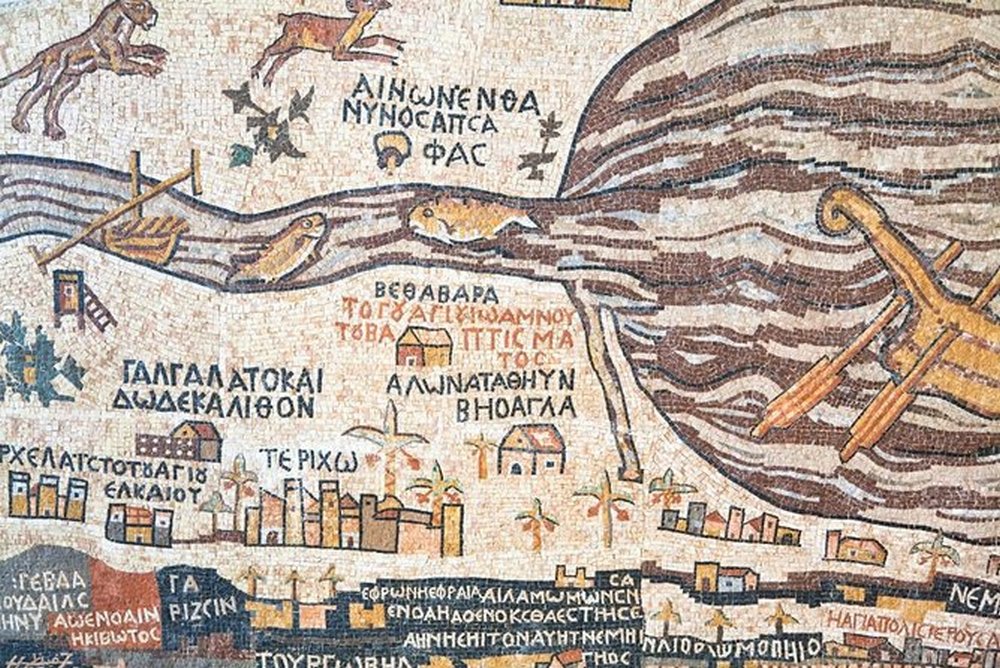
"Floor mosaics - Map of Madaba". Photos © viator.com
It depicts the cities of Palestine in a manner typical of Byzantine art. All names of settlements are written in Greek.
Park Guell
The famous park is located in Barcelona, Spain. Here you can see the unique works of architect Antoni Gaudi in the open air. Benches, fences, and paths are decorated with images of fantasy animals and plants created from fragments of ceramic products. The park is considered a gift of the famous Spanish master to his beloved city.
KyivGallery art critic
